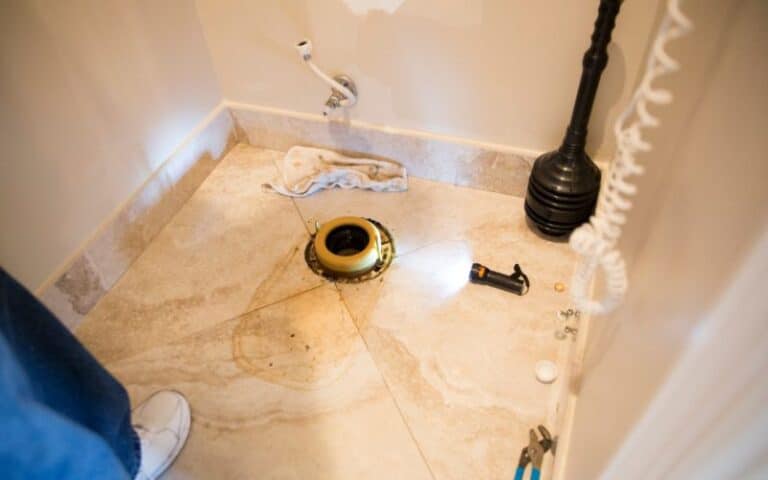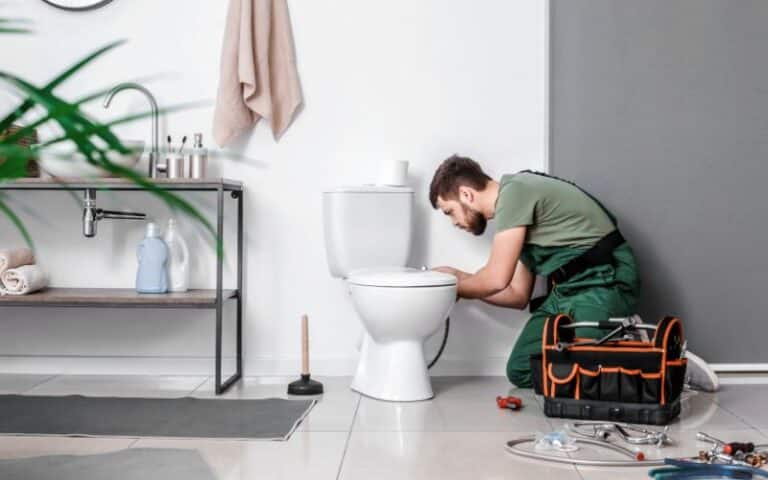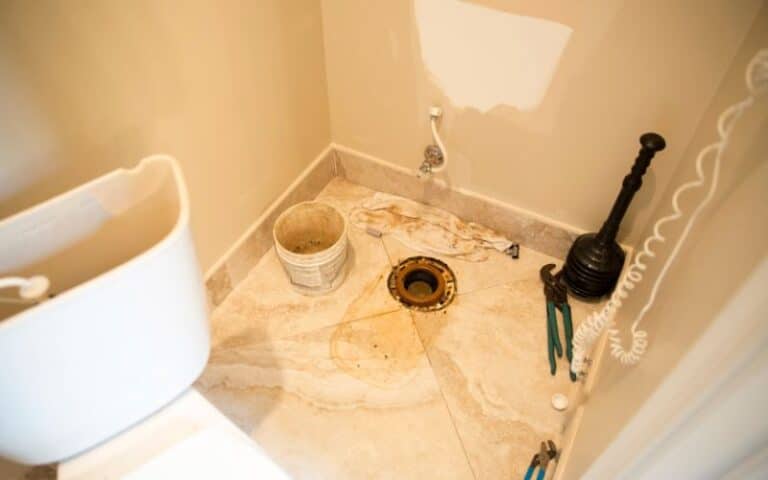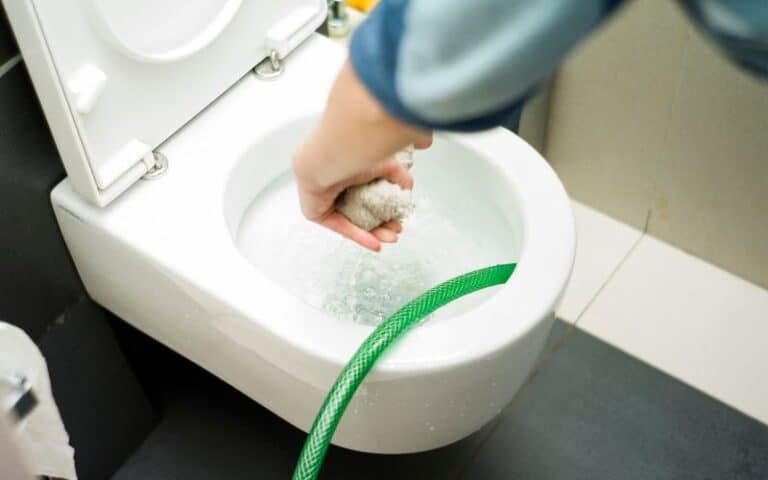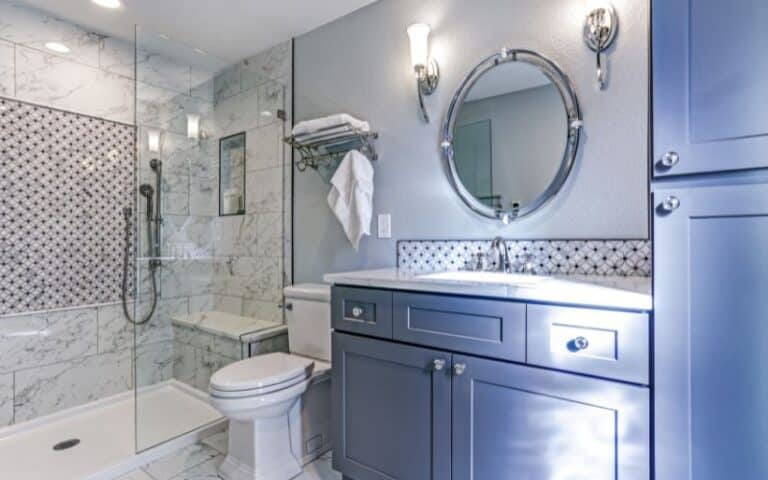There isn’t much difference between all types of toilets. However, depending on their measurements, it may make their positioning appear off during installation.
Thus, the need for remodeling your toilet becomes a necessity. Although you might choose to overlook this, it’s always best to consider a remodel for ease when using the toilet.
So, what do you do if your toilet flange is placed too close to the wall? Well, you’d have to stick around to find out!
One solution to consider with a toilet flange too close to the wall is, creating an alcove by removing drywall and studs to a height and width that clears the tank and reframing it like a window or door opening. Another solution is to use an offset flange to move the flange some inches away from the wall.
People often ignore the possibility of remodeling a toilet due to how messy they think it might get, and this is why they’d seem stuck when they realize they need one.
However, you don’t need to worry about that, we’ve done some detailed research which you can find in this informative guide.
By the end, you should be conversant with all that’s involved in the process of remodeling your toilet.
How Close Should Your Toilet Flange Be to the Wall?
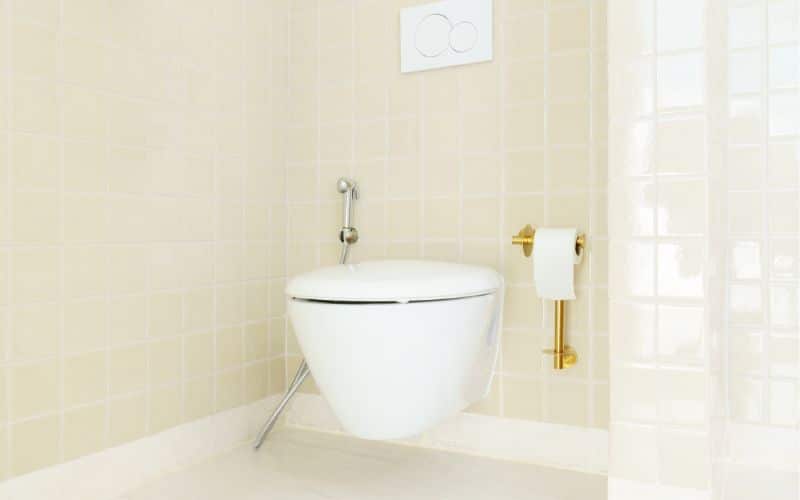
Generally speaking, the distance of the toilet flange from the wall should be at least 15 inches.
But, the standard distance is 12 inches from the finished wall to the center of the flange.
However, the recommended distance between the toilet flange and the wall behind it can vary depending on a few factors, such as
- The rough-in measurement
- The size of the toilet.
- The bathroom and toilet layout.
When installing a toilet, it’s important to consider the distance between the flange and the wall behind it.
The toilet flange is part of the toilet that connects it to the waste pipe on the floor, and it’s typically located on the floor near the back of the toilet.
The rough-in measurement is the distance between the wall and the center of the toilet flange.
Thus, measuring from the flange’s center to the back wall is recommended to ensure proper clearance.
If the flange is too close to the wall, options such as reframing the area or using offset flanges can be considered.
So, it’s important to know this measurement before installing a toilet, as it can affect the placement of the toilet in the bathroom.
Furthermore, the toilet flange should be positioned so that it’s as close to the wall as possible without touching it.
That helps to ensure that the toilet is stable and secure and that there are no leaks or other issues with the installation.
Additionally, it’s important to ensure enough space for the toilet to be seated properly and enough clearance for the tank and bowl of the toilet.
Overall, it’s important to carefully measure and consider the placement of the toilet flange when installing a toilet to ensure that the installation is secure and functional.
How to Move My Toilet Flange Away From the Wall (A Detailed Guide)?
Moving a toilet flange away from the wall might be necessary if the existing offset is incorrect or perhaps for a bathroom renovation project.
First, you’ll need some materials, such as;
- Offset toilet flange
- PVC primer and cement
- Saw
- Measuring tape
Here’s a step-by-step guide to help you move a toilet flange away from the wall:
- Turn off the water supply valve for the toilet and empty the bowl and tank.
- Remove the toilet by unscrewing the bolts that connect the toilet to the flange and lifting the toilet off the flange. You may need to rock it back and forth to break the seal.
- Remove the old toilet flange. If it’s solvent-glued in place, you will need to cut it away with a saw, making sure to avoid damaging the piping underneath.
If it is screwed in place, just remove the screws. - Measure the distance between the center of the flange and the finished wall using a measuring tape. That will tell you how far away from the wall to install the new flange.
- Install an offset toilet flange. An offset flange has a bend in the pipe that connects to the toilet, allowing you to move the flange to the left or right of the original location.
Apply PVC primer to the inside of the outlet of the flange as well as the outside of the existing drain pipe. - Test-fit the toilet on top of the new flange to ensure it properly lines up with the waste outlet.
- Secure the toilet onto the flange by tightening the bolts.
- Turn on the water supply valve for the toilet, and check for leaks at the base of the toilet.
That’s it! With these steps, you should now have successfully moved your toilet flange away from the wall.
Nonetheless, if you’re unsure about any of these steps or uncomfortable with tackling the job on your own, it’s always best to consult a professional to get the job done right.
Can I Install an Offset Flange to Move My Toilet Away from the Wall?
You can use an offset toilet flange to move your toilet away from the wall. Offset toilet flanges are designed to help better position a toilet.
If the existing flange is improperly positioned or if the distance between the flange and the wall is not within the standard distance, an offset flange is your best bet.
This flange can allow you to adjust your toilet’s position by a few inches. However, it’s important to note that offset flanges may not be suitable for all situations.
Also, ensuring your installation complies with local plumbing codes and regulations is important.
If you want to move your toilet away from the wall, installing an offset flange is an option you may want to consider.
An offset flange is a type of toilet flange that connects the toilet bowl to the waste pipe and allows you to move the toilet a few inches in any direction, including away from the wall.
You may want to install an offset flange to move your toilet away from the wall for a few reasons.
First, it can help create more space in your bathroom, especially if you have a small one.
Moving the toilet away from the wall can create more room to move around and make the bathroom feel more spacious.
Secondly, if your toilet is too close to the wall, it can make it difficult to clean the area around your toilet’s base.
That can lead to unsanitary conditions, unpleasant odors, and even mold or mildew growth.
So, by installing an offset flange and moving the toilet away from the wall, you can make it easier to clean and maintain the area around the base of the toilet.
In addition, if you’re installing beadboard or another type of wall covering in your bathroom, having the toilet too close to the wall makes it difficult to install the wall covering properly.
Moving the toilet away from the wall with an offset flange can help to create the space you need to properly install the wall covering.
Overall, if you’re looking to create more space in your bathroom, make it easier to clean and maintain the area around the base of your toilet.
In addition to installing wall coverings properly, installing an offset flange to move your toilet away from the wall could be a good solution.
As with any other project, installing an offset flange does come with its advantages as well as its disadvantages, outlined below.
| Pros | Cons |
|---|---|
| Increased flexibility | Increased cost |
| Easier repairs | Increased complexity |
| Better ventilation | Potential leaks |
| Improved aesthetics | Reduced structural integrity |
| Enhanced accessibility | Decreased flushing power |
| Improved hygiene | Reduced availability of space |
How Much Does it Cost to Move Your Toilet Flange?
Replacing a toilet flange costs between $145 to $165. However, the cost could be higher if there are additional complications.
The cost of moving a toilet drain plumbing can start at $877 – $1,061 per piping run, according to a cost calculator from June 2023.
Moving a toilet generally costs between $1,000 and $3,000, and the total cost will depend on various factors, such as the materials used and whether existing plumbing needs to be moved.
Moving a toilet flange involves detaching the toilet from the plumbing and adjusting the position of the flange so that the toilet can be properly reconnected.
The cost of moving a toilet flange can vary based on various factors, including the location of the toilet, the condition of the existing flange, the plumbing, and the extent of the necessary repairs.
Also, this cost typically includes the cost of removing and reinstalling the toilet and the cost of any necessary tools involved in the repairs.
Additionally, any flooring or tile work that needs to be done to fill in the space where the old toilet was will also add to the overall cost.
If the existing plumbing is in good condition and only minor adjustments are needed, the cost will likely be on the lower end of this range.
But, if major repairs are required, or the plumbing needs to be completely reconfigured to accommodate the new location of the toilet, the cost can be significantly higher.
It’s important to note that the cost of moving a toilet flange varies depending on the location and the service provider.
Therefore, always ensure to obtain quotes from several plumbers to ensure a fair price.
Additionally, as a homeowner, you can save costs by doing some of the work yourself, such as removing the toilet or flooring.
However, it’s ideal to consult with a professional to ensure a proper installation and avoid any potential plumbing mishaps.
In conclusion, the cost of moving a toilet flange can vary widely depending on the extent of the repairs needed and the specific circumstances of the installation.
Thus, you can get multiple quotes and consult with a plumber to determine the exact cost for your specific situation.
It can be expensive because it requires advanced plumbing skills and specialized tools, such as an offset toilet flange, which can accommodate the new location of the toilet.
Additionally, depending on the condition of the existing plumbing and the specific situation, complications may arise during the relocation process, which can also add to the cost.
It’s also worth noting that the cost of moving a toilet may vary depending on your location and the specific plumber or plumbing service you hire.
Moving a toilet flange can be challenging, especially if you don’t have experience with plumbing.
It requires careful planning and precise execution to ensure that the new location is properly plumbed and sealed.
Therefore, it’s advisable to seek the services of a professional. However, if you have plumbing experience and the proper tools, you can move a toilet flange by yourself.
Just be sure to carefully research the process and follow all necessary safety precautions to avoid any mistakes that could lead to damage or leaks.

